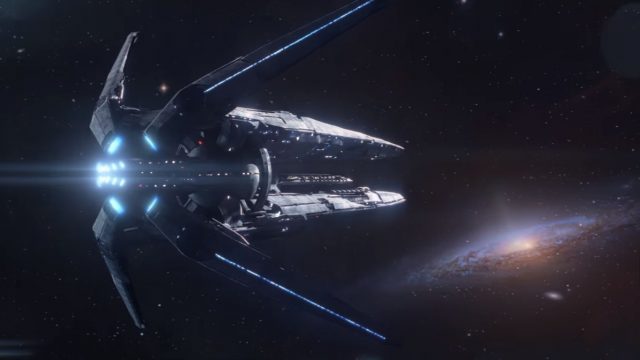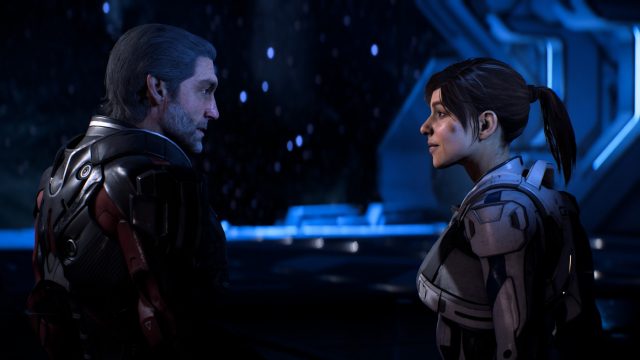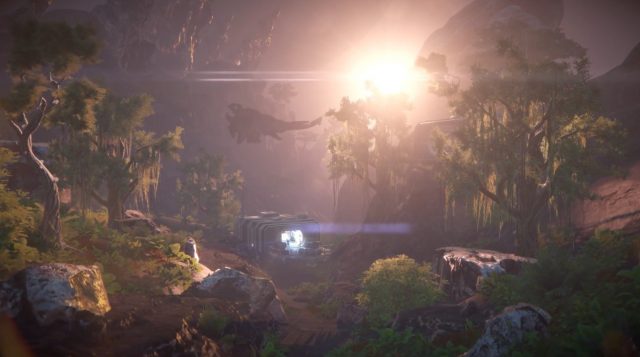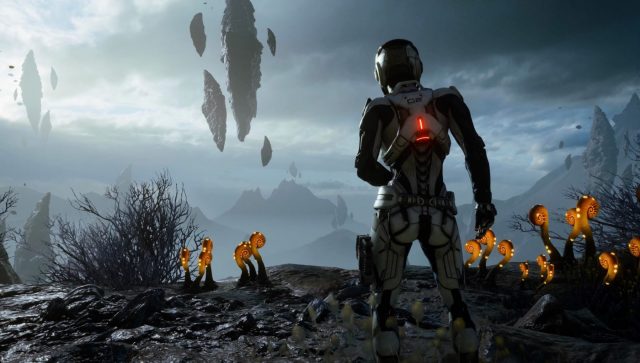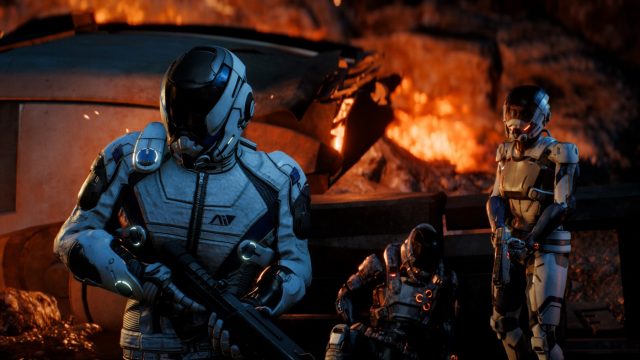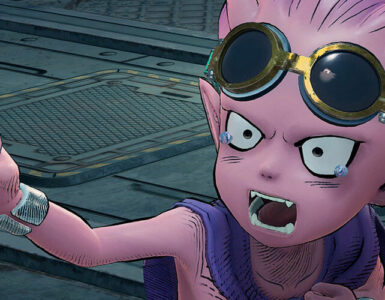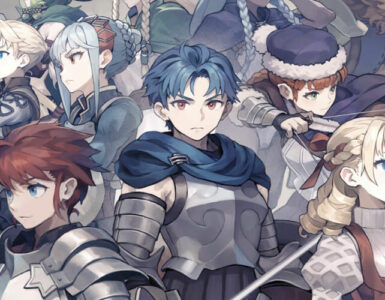Satisfying or not, the tale of Commander Shepard’s struggle against the Reaper menace came to a definitive conclusion with Mass Effect 3. But the story is far from over. After a controversial ending, along with a 5-year hiatus, publisher EA and developer BioWare are poised to offer us a fresh take on the much-loved sci-fi action-RPG franchise, with Mass Effect: Andromeda.
We were invited to meet up with Fabrice Condominas, the producer for the game in Sydney earlier this week, and if what we’ve seen (and played!) of an early build of Mass Effect: Andromeda is representative of the final quality of the full game, fans are in for something truly special.
Before we start, allow me to get something out of the way: this is a huge, HUGE game, and I barely scratched the surface of what Andromeda has to offer, during my limited 2-hour playtime with it. There’s just so much to see and do in this new galaxy, and it would be impossible to cover all of it in a single article. As such, our coverage of Andromeda will be ongoing, and split across multiple pieces.
Pathfinders Lead The Way
If you’ve been following the development of Mass Effect: Andromeda, you already know that while Andromeda is technically a sequel to Mass Effect 3, it isn’t really one in the narrative sense. While the events kicking off Andromeda are set in motion in between Mass Effect 2 and Mass Effect 3, the story really only picks up several centuries later.
As a “Plan B” of sorts, a number of massive Ark ships have been sent on a 600-year journey to the Andromeda galaxy, to ensure the continued survival of the species and races of the Milky Way galaxy, should the war against the Reapers be lost.
BioWare’s hallmark of conferring some form of special identity on the player character remains intact in Andromeda. You are a Pathfinder – the best of what humanity has to offer, and are part of the elite team tasked with leading the expedition to explore and colonize habitable worlds, in a strange new galaxy.
At the same time, BioWare seems to be playing up the family aspect of character relationships in this title, which is reminiscent of another of their previous titles, Dragon Age II. The commander of the Pathfinder team, Alec Ryder, is the player character’s father, and players get to choose between playing one of the Ryder twins – Scott and Sara (Yep, you get to choose your gender as always).
Regardless of the player’s choice, the other sibling remains in the game as an NPC that the player can converse or interact with. With a heavy emphasis on interpersonal relationships in BioWare games, your sibling’s presence should be an interesting one. We hope that he (or she) will play a key role in the story and serve as more than just a moral compass for the player.
Are We There Yet?
There has undeniably been a revival of science-fiction and space travel in popular culture over the last several years, and the developers hope to capitalize on this sentiment among their audience, by putting exploration at the forefront of Andromeda.
That said, Andromeda flips the familiar Mass Effect setting on its head, as the Pathfinder is now essentially the alien visitor in a foreign galaxy. In our session with the game, Fabrice Condominas compared the experiences of Commander Shepard against that of Ryder.

“Shepard is established as somebody who was already familiar with the galaxy he lives in,” explains Fabrice.
“He knows more about the Mass Effect universe than the player controlling him.”
In contrast, Ryder’s knowledge and familiarity with Andromeda is on the same level as that of the player, which is zero, and this allows the game to convey a far greater sense of discovery than before.
“We wanted Ryder to be just as much of a stranger to the Andromeda galaxy as the player is. When the Pathfinder learns something new, so does the player.”
Fabrice went on to mention that the team worked closely with a number of scientific institutions, such as the European Space Agency, to ensure that their designs remain believable and consistent.
“We wanted some of the worlds that you’ll explore to appear utterly alien and unique, but still firmly rooted in scientific basis.”
We’re Not In Kansas Anymore
One of the first planets I was able to explore is a good example of this approach. The opening level is set on a rocky, mountainous world, plagued by unusual electrical and gravitational phenomena, with massive flying creatures soaring through the skies above.
These anomalous conditions causes rocks to float in mid-air, and have made the environment prone to sudden lightning storms. If you still have traumatic memories of having to dodge 200 consecutive lightning bolts in Final Fantasy X for the ultimate weapon, don’t worry; electrical charges would build up visibly on the ground, giving the player here fair warning to avoid these areas, so as to avoid getting zapped by 50,000 volts.
While the outdoor landscape appeared largely barren (for story reasons that remain a mystery to me for now), an optional sequence in this level takes you deep into a cave, where the local flora remained relatively untouched, and on full display. A large tree dominated the center of the chamber, and it was surrounded by fern-like vegetation, with bright, bulbous fronds that curled into a spiral.
While I’ve already seen these “ferns” outside the cave, I noticed that they appeared here with far greater density, giving the cave more of a lush, green appearance. A party member with Ryder remarked that it was probably the micro-climate within the cave that made this possible.
Storytelling via environmental design is a concept that only the best developers in the business are able to grasp, much less execute. I guessed that whatever scoured the landscape outside probably did so fairly recently, and I couldn’t wait to find out just what it was.
Take Me Higher
Mass Effect: Andromeda brings an unprecedented level of gameplay verticality to its level and encounter design, and this is complemented by the addition of a jet-pack to the Pathfinder’s arsenal. Ryder is able to leap several meters into the air with the aid of the jet-pack, and is also capable of quick horizontal boosts that allow him to cross large gaps in the terrain.
Needless to say, this changes up exploration, as well as combat to a much larger degree. Firefights in previous games, while sufficiently varied, generally took place on a flat, 2D plane, with the occasional bit of higher ground for snipers who preferred to hang back and pick off enemies from afar.
I’m glad to report that this is no longer the case in Andromeda. My first firefight happened on the slopes of a valley, with plenty of rocky outcroppings to use as cover, or as higher vantage points. While it is certainly possible to tackle this fight from a traditional third-person shooter POV, by sticking to cover and popping out during an opening, the availability of the jet-pack literally adds a whole new dimension to combat.
Judicious usage of the jet-pack allows the Pathfinder to cross the battlefield quickly, allowing the player to make lightning-fast flanking maneuvers, or find higher ground to gain a decisive tactical advantage. There are also several direct combat applications for the jet-pack: aim down the sights while airborne, and Ryder will hover in place for a couple of seconds, allowing the player to line up a shot on a target.
For defensive purposes, you can use the jet-pack to avoid a charging enemy or a grenade, as the horizontal boost effectively replaces the dodge-roll from Mass Effect 3 as an evasive maneuver. Simply put, the level of mobility afforded to the player is nothing short of amazing; it felt like Destiny on steroids.
“The ability to jump is the single biggest change we’ve made to the movement in Mass Effect. It makes things so much more dynamic,” says Fabrice. Judging from his excited tone, he is clearly as enthusiastic about the jet-pack as I am.
Up Close And Personal
Mass Effect fans have long been clamouring for an improved melee combat system in the game. While Mass Effect 3 briefly flirted with this in multiplayer, melee weapons are now an integral part of the single-player experience in Andromeda, as they now occupy an inventory slot in Ryder’s loadout.
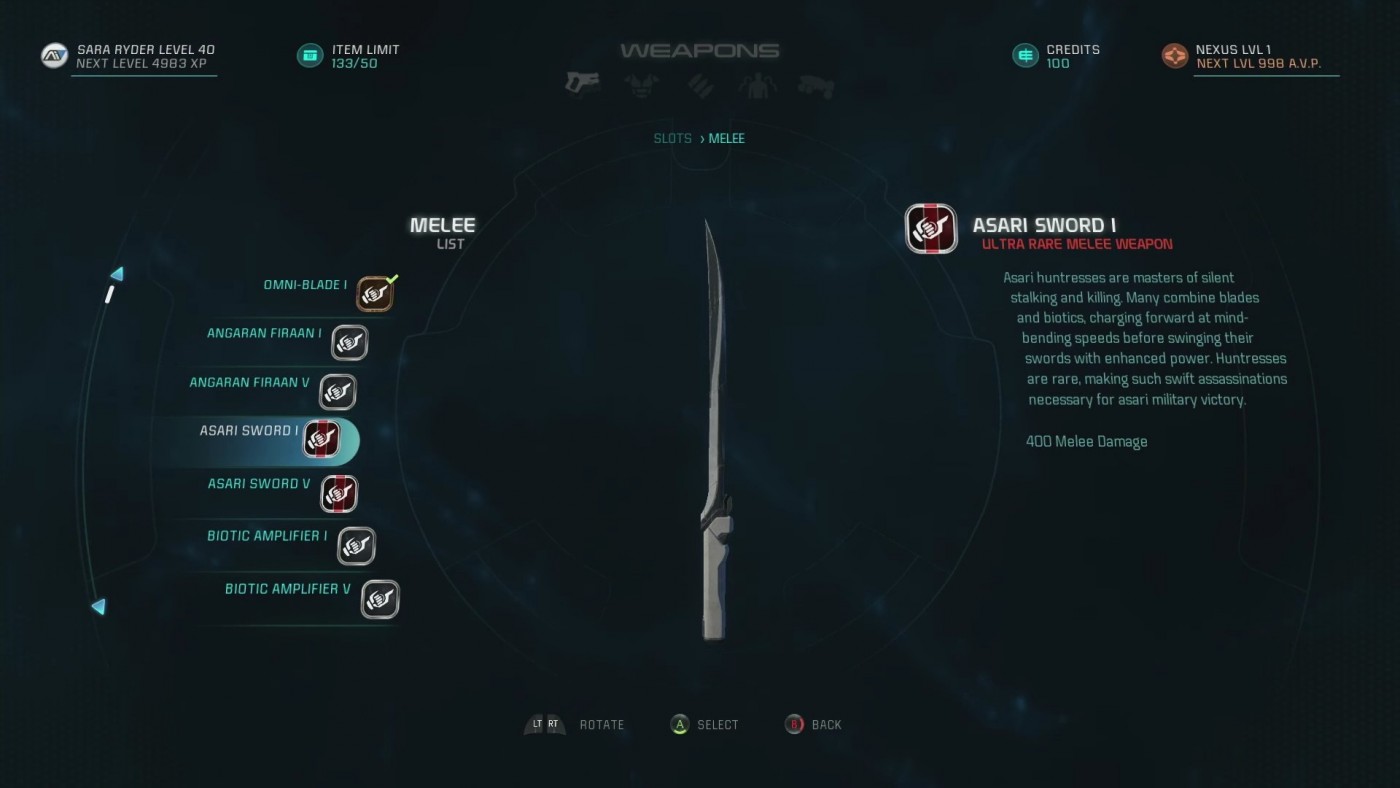
You start the game off with a generic Omniblade, but will come across a variety of unique melee weapons with differing attributes as you progress through the game. If you’ve ever wanted to bash some heads in with a Krogan hammer, or slice up your enemies up with a sword like some futuristic techno-ninja, now you can!
I also found that you could hold down the melee button while in mid-air, and the Pathfinder will come crashing back down to earth with a powerful attack, dealing significant damage around the impact zone. This is a great extension of an already amazingly-fluid and mobile combat system that just feels natural and intuitive.
Brian loves video games, gadgets, and comic books – in other words, all things geeky. Obsessed with lifting things up and putting them down repeatedly, he also loves ice cream, putting things together, and the occasional good book.


